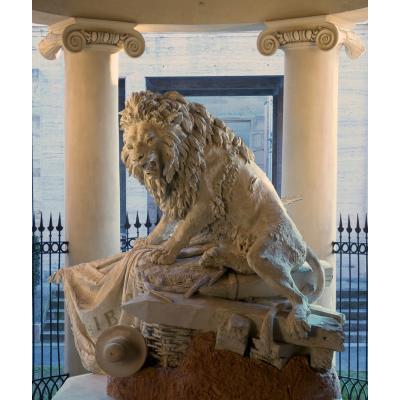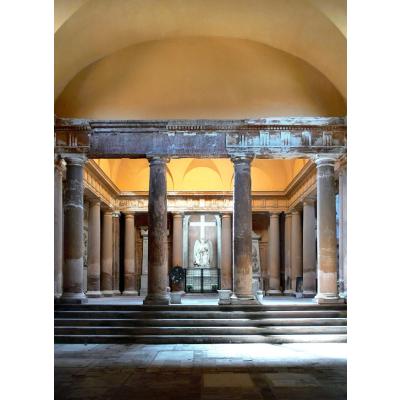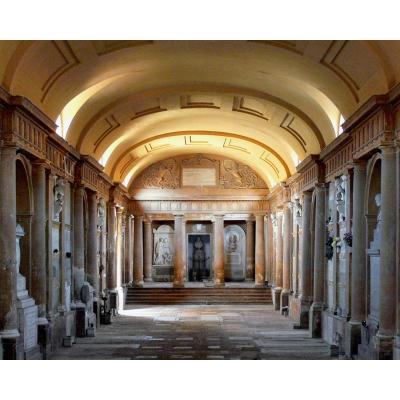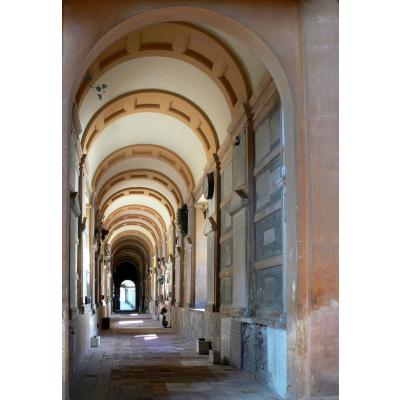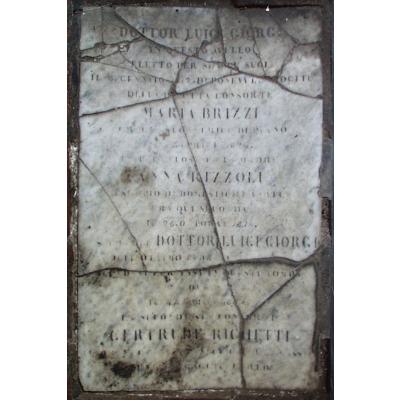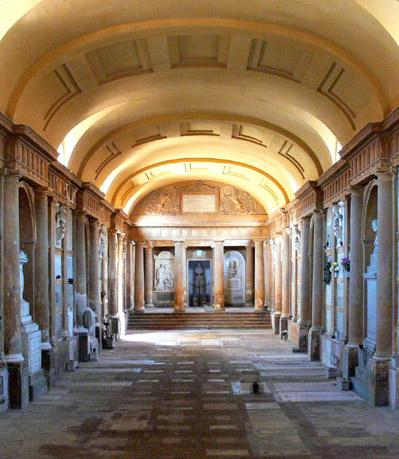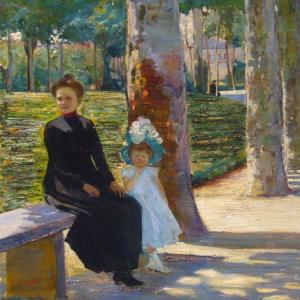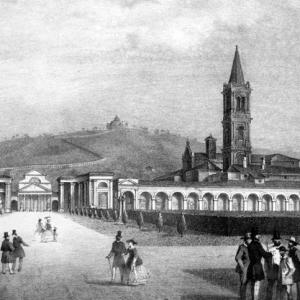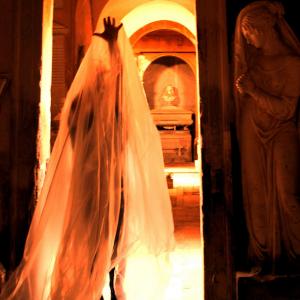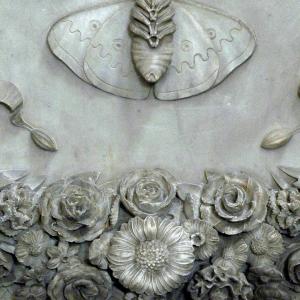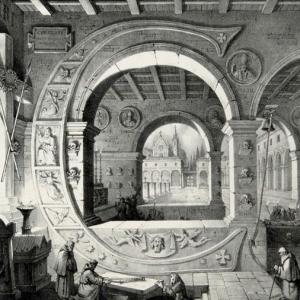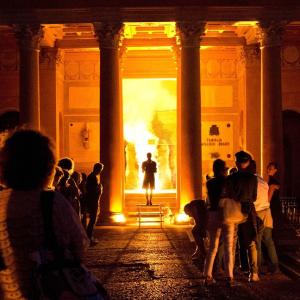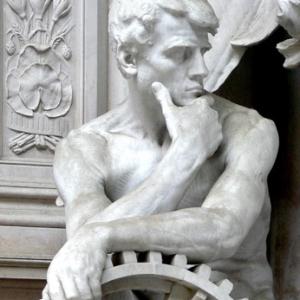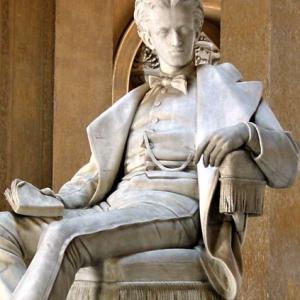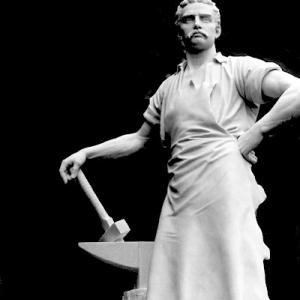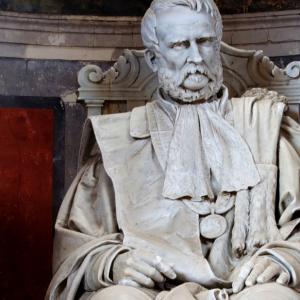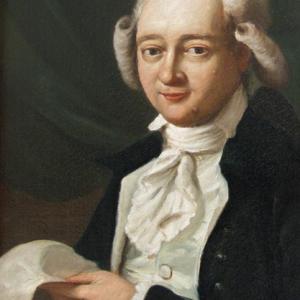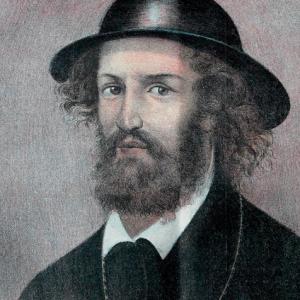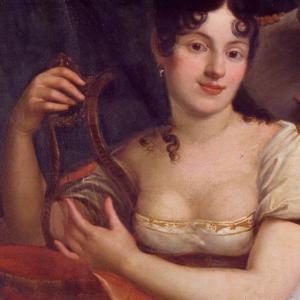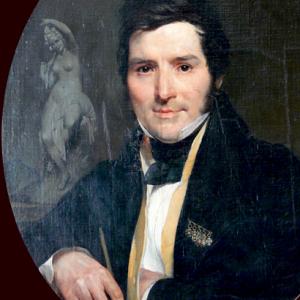Schede
The Sala delle Tombe (the Tombs’ room) is situated where there once was the monks’ recreation room and was designed by Angelo Venturoli. However works were directed, from 1816, by Luigi Marchesini, who had already designed other artworks in Certosa: the Sala Ellittica (Elliptical Room), the Sala delle Catacombe (Catacombs’ Room), the Colombario (Columbarium) and the Loggiato delle Tombe (Tombs’ arcaded Lodge).
Marchesini’s work was mainly focused on the creation of a vestibule with four ionian columns which emphasises the entrance to the hall along with the four columned open apse which has a classical entablature and an elliptical vault too. In the vestibule, situated on top of the entrance arcade, there’s a statue representing Bologna: it’s a woman crying for her sons’ death. In the 19th century it was usual to create statues with allegorical meanings; the purpose was to highlight memory and not pain. In the apse there is a colossal lion, wounded and roaring while defending the remains of his barricade made by the bolognese Carlo Monari, located there in memory of the ones who died for Italy’s independence. Between August 1859 and 8th August 1940 the Bisi’s Tomb (n. 86) hosted the body of Ugo Bassi, after they had been moved from priests’ enclosure. On August 16, 1859, Giuseppe Garibaldi stopped in front of it after having commemorated to the Mandriole di Ravenna the Anita’s tenth anniversary.
Catacombs’ Room, that already existed in 1827, is situated in a place where there previously were the cells of four monks of ancient monastery, later it was restructured various times by the architect Luigi Marchesini and then by the engineer Coriolano Monti. This area is one of the most suggestive place in Certosa, and among the most refined architectures of Bologna in 19th century. At the sides, on a higher floor, are placed two vestibules with a square plant, with four columns on each side. Arched niches can be found in the room. They are separated by doric columns and pilaster strip, elliptical vault on doric entablature with triglyphs on the frieze. Inside, the room hosts the vertical stele dedicated to G. B. Giacomelli (1822) made by Alessandro Franceschi, represented a woman leaning on a commemorative torso derived from the Giovanni Volpato Canova’s monument. It is also possible to see Eva taking prohibited fruit made by Cincinnato Baruzzi that the artist created in his last years for him and his wife. Today. It only remains the portrait of the two spouses. Eva was smuggled out in 1992 and never found again: but it is still possible to see it throw some ancient photos.
The Tombs’ arcaded Lodge, parallel to the Catacombs room, is situated in a place where there were previously the store and the transit area for the vineyard of the monastery. From 1822 various plants are been created and then modified during years until 1860, with the opened of Sala Gemina. It’s a neoclassical setting with entablature supported by pilasters with panelled ceiling. The lodge has two gates used for cemetery spaces. Inside are situated the statue of a crying woman on Innocenzo Giungi’s cinerary urn (First Cell / Cella Prima, 1824), the Bentivoglio’s monumental tomb (Second Cell / Cella Seconda) and finally various statues and reliefs made by Alessandro Franceschi, it is also possible to see the Baldini’s monument (1821), masterpiece who develops in an innovative way the Neoclassical theme of the late for the dead. In 1860 Coriolano Monti (1815 – 1880) close the visual background of the Loggia of the Tombs with the elegant Gemina Hall.
Traduzione a cura di Balboni Silvia, Gurieri Noemi, Righi Stefano; nell'ambito del progetto di Alternanza scuola-lavoro 2018/19 con il Liceo Ginnasio Luigi Galvani di Bologna.


